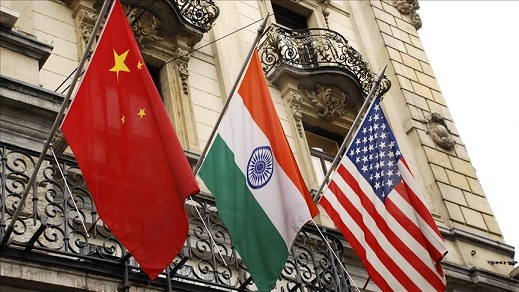China’s worldview, its postulates and a reality check.
Relevance:
GS Paper-2
- India and its Neighborhood- Relations.
- Bilateral, Regional, and Global Groupings and Agreements involving India and/or affecting India’s interests.
Context
The on-going rivalry between China and the United States- The United States is concerned about China’s rise and it is trying to contain China’s influence. China, on the other hand, is trying to assert its dominance in the region and it is challenging the United States’ position as the world’s leading superpower.
Note: The editorial discusses China’s evolving worldview, particularly the idea of ‘changes unseen in a Century’, as emphasized by current paramount leader Xi Jinping. This concept highlights China’s belief in the decline of the Western ‘rules based order’ and its aspiration to establish a new world order. The editorial delves into the significance of China’s worldview and its implications for global dynamics.
Key Drivers of China’s Global Emergence:
- Multi-faceted Dominance: China contends that its rise, fueled by technology, economic strength, and demographics, ensures its future success.
- Economic Growth: China’s GDP has surged at 10% annually since 1978, propelling it to the world’s second-largest economy. Factors include a booming domestic market, cost-effective labor, and export-focused manufacturing.
- Military Advancement: China boasts the largest active military, modernizing with advanced weapons like aircraft carriers and stealth fighters.
- Diplomatic Influence: Proactive diplomacy forms alliances, strengthens international ties, and shapes global orders. China’s engagement spans continents and organizations, magnifying its global impact.
Impact of China’s Rise on the International System:
- Economic Dependency: China’s ascent as the largest trading partner for many nations, notably the U.S., has made countries increasingly reliant on it for trade and investments.
- Influence in International Organizations: China asserts its influence through participation in international organizations such as the World Health Organization, shaping global standards and norms.
- Altered Political Landscape: China’s economic and military growth has reshaped global politics, generating heightened tensions and reshuffling power dynamics. Its expanding military presence has raised concerns about its potential to project force beyond its borders.
- Decisive Voice and Standard Setting: Chinese standards gain prominence, and China secures a decisive voice in international standards-setting bodies. This is evident in territorial disputes with neighboring countries, including contentious claims in the South China Sea and border disputes with nations like India, Vietnam, and Japan.
U.S. as the Main Threat:
- United States as the Principal Challenge: Chinese leaders perceive the U.S. as a primary threat to China’s aspirations. Growing polarization and a shift from ‘engagement and partial containment’ to outright competition fuel tensions between the two nations.
- Symptoms of Strain: Various indicators like the Ukraine conflict, security partnerships (AUKUS and Quad), and concerns about Taiwan reveal a shift in U.S. attitudes, leading to a more confrontational stance with China.
Challenges and Reality Check:
- Sustaining Economic Growth: Despite its global ambitions, China faces the task of maintaining the robust economic growth of the early 21st century. Recent setbacks, including COVID-19’s impact and restrictive policies, challenge its aspirations.
- Economic Policy Impact: Beijing’s focus on state control over private enterprise has led to a decline in GDP growth, employment uncertainties, and an aging population. This reality prompts a re-evaluation of economic reforms.
- Aging Population Challenge: China’s emphasis on state control adds complexity to caring for an aging population, necessitating strategic solutions.
- No longer manufacturing monopoly: Countries are diversifying their manufacturing bases away from China.
Impact of US-China Rivalry on India:
- Company Relocation: US tariffs are poised to drive foreign-invested companies away from China, potentially leading to a surge in relocations to India. This trend aligns with India’s Make in India initiative, further enhancing its appeal as a manufacturing destination.
- Stock Market Fluctuations: Indian stock markets might experience volatility, as witnessed recently, driven by cautious investor sentiment.
- Security concerns: China is expanding its military presence in the Indian Ocean, which could threaten India’s security. India is also concerned about China’s growing influence in Pakistan.
- Strategic opportunities: India is seen as a potential counterweight to China in the Indo-Pacific region. The United States is looking to deepen its relationship with India.
- Geopolitical challenges: The US-China rivalry has also created geopolitical challenges for India. India has to balance its relationships with the United States and China.
To compete in a period of ‘Polycentric Competition and Cooperation,‘ China must make significant shifts in approach and policy. The odds are stacked against China, necessitating new economic models, structural reforms, and a revaluation of the state’s role in promoting innovation.
Source – The Hindu
Mains Question:
Q Critically Examine China’s Role in Disrupting the Current World Order and Discuss India’s Potential as a Key Contributor in Crafting a New Global Paradigm. 250 words




